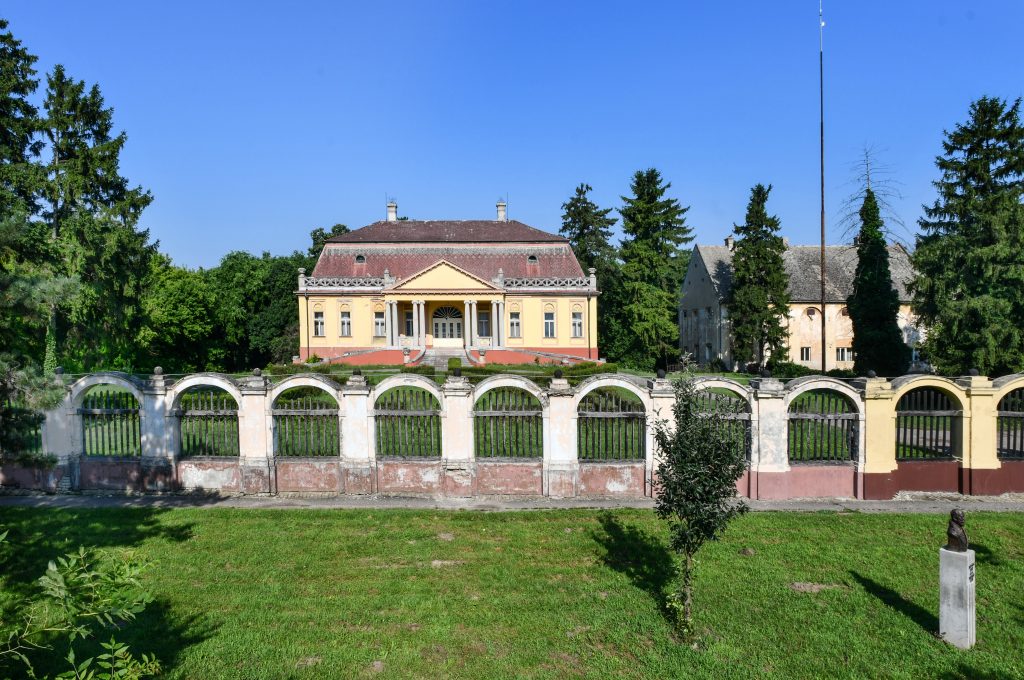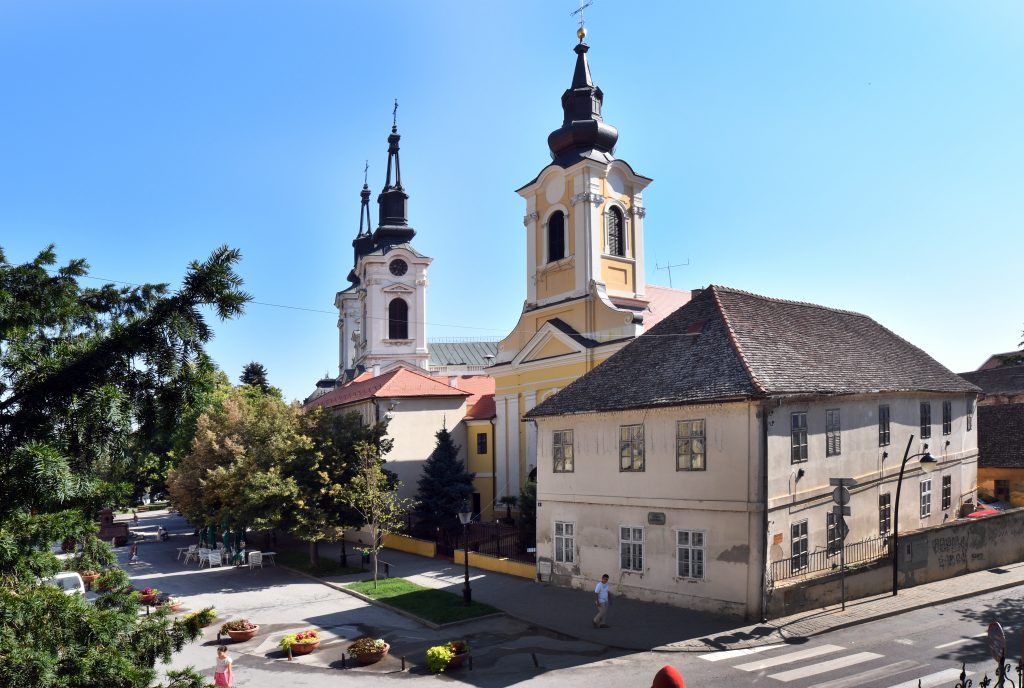Cultural journey to past millenniums
Vojvodina treasures cultural heritage of special importance and millenniums of cultural symbols.

Early settlers
Exhibits and sites where amazing artistic and civilisation related artefacts of the early settlers in this area have been discovered are spread all over Vojvodina in for example Ludoš, Doroslovo, Starčevo, Vatin and many more. Perhaps you knew – but perhaps not – In the vicinity of the Danube /Donja Branjevina site not far away from the village of Deronje situated in the Odžaci municipality, in the West Bačka District, archaeologists excavated the statuette of the Red-haired goddess. This masterpiece by the early Danube region farmers reflects their dedication to the fertility cult. The statuette is kept in the museum in Odžaci.
Roman period
Profile of archaeological locations in Vojvodina is enriched with the heritage and objects from the Roman period. They are concentrated in the former settlement of Sirmium – one of the four prefectures of the Roman Empire – Sremska Mitrovica of today. Did you know that 10 Roman emperors were born in Sirmium or its vicinity – Herennius Etruscus (251), Hostilian (251), Decius Traian (249-251), Claudius II (268-270), Quintillus (270), Aurelian (270-275), Probus (276- 282), Maximianus Herculius (285-310), Constantius II (337-361), Flavius Gratianus – Gratian (367-383).
Bač
Meander of the river Mostonga still guards the fortress in Bač – the most important monument of medieval history in the southern parts of the Pannonian plain. Bač was mentioned in XI century as the centre of the county, and the fortress was renovated in the Renaissance style at the end of XV and beginning of XVI century. After you have completed your tour of the Bač fortress make sure you visit “Podgradje” – downtown part of the fortress that locals call Peyton Place entering it through Šiljak entrance and visit nearby Kalvaria too.
Petrovaradin
Most famous fortress in Vojvodina is located in Novi Sad. “Petrovaradinska tvrdjava” is one of the significant symbols of culture in this part of Europe. Due to its size and presence of a multitude of structures within it, it represents a masterpiece among fortified edifices.
Museum of Vojvodina
Vojvodina sightseeing tour should include one of the institutions of culture among which is The Museum of Vojvodina– cultural institution with more than 150 years of museological tradition, and one of the biggest general museums in Serbia, with invaluable collections of Vojvodina cultural heritage- from archeology, history, history of art, to ethnology, with close to 500,000 original objects. Articles of rare artistic and museological value that adequately reflect the past of the Vojvodina region are exhibited in the museum’s permanent exhibition, integrated into three thematic units: archeology, history (history of art) and ethnology. The permanent exhibition with 6000 exhibits on 3000 m2 realistically presents the Vojvodina past, from prehistory to the middle of the 20th century, and achievements of the civilizations living here in the 8000-year time span.
Make sure you visit Тhe Gallery of Matica srpska that was founded under the auspices of The Matica srpska, the oldest cultural, literary and scientific institution of Serbian people. The permanent collection is exhibited in three parts, chronologically presenting the Serbian national art from the 16th to the 20th century and its integration into the mainstream of modern European art, as well.
During its existence, the Gallery has grown into the unique national institution whose art fund, with its rich collection of the Serbian art from the 16th to the 21st century, shows the beginning, the progress and the achievements in the Serbian art and indicates the position of the Serbian culture and art in the European context. A total number of art works is approximately 7.000. For the works of adaptation and creation of the new permanent collection of the 18th, 19th and the first half of the 20th century, The Gallery of Matica Srpska was awarded by NC ICOM Serbia for the best project in 2010.

The Novi Sad City Museum is devoted to the development of the city from its foundation to the present period. The central building of the museum is located on the upper plateau of the Petrovaradin Fortress, in the structure known as Topovnjača (Gunboat) or Mamula’s Barracks, which was built in 1775 as a one-floor barracks. The ground floor of the building contains a permanent exhibition, the Petrovaradin Fortress in the Past, which presents the continuity of inhabitation and military fortifications of this locality, from prehistory to the World War I. On the first floor, there is the Study Exhibition of the Department of Cultural History, which depicts the civil life of Novi Sad from the middle of the 18th century to the second half of the 20th century. Besides period furniture and objects of applied art, the exhibition displays pieces of renowned artists – Sava Šumanovic, Djordje Jovanović, Boško Petrović, Milenko Šerban, and others. There are also underground military galleries- Part of one of the biggest attractions of the Petrovaradin Fortress is open for visitors, with the expert guidance of the Novi Sad City Museum guiding service. Underground military galleries are a gradual four-level communication system, with different corridors and rooms of various purposes and sizes, with loopholes and airshafts.
Vršačka kula
Remnants of a city of Vršac fortification that stands as the most remarkable monument in Banat is certainly Vršačka kula built in XIV century.
Sremski Karlovci
Centuries old town of Sremski Karlovci is situated on the contact point of Fruška gora slopes and the Danube banks, in a fertile winegrowing area. This small baroque town represents the most important site regarding Serbian culture and spirituality in the former Austro-Hungarian Empire. Locals are very proud of Patrijaršijski dvor – the Residence of the Patriarch, Building of the Magistrate -Town Hall from where Serbian Vojvodina was proclaimed in 1848, Karlovačka gimnazija -First Serbian Grammar school and picturesque churches of Sremski Karlovci. Kapela mira – Chapel of Peace is a reminder of signing of the Peace treaty in 1699 between Austria and its allies on one side and Turkey on the other.
Sremski Karlovci has one-of-a-kind Muzej pčelarstva – Honey Museum and it is a famous vine-tasting stopover in many old vine cellars. The central meeting point in Karlovci is a baroque fountain called Četiri lava – Four Lions. It keeps the memory of an old saying that says that the one who drinks the water from this fountain will return here one day and get married.
Vojvodina castles
A special chapter in the cultural heritage of Vojvodina belongs to the castles. They show architecturally overemphasized splendour and wealth – an inclination towards cultural and status prosperity of the past generations. Castles that used to belong to the family Dundjerski are of special interest since this family has left a significant imprint on the more recent history of Vojvodina -Čelarevo, Fantast, Kulpin, Sokolac … Close to the riverbanks of Begej is located castle of Ečka, turned into a luxury hotel. During the opening ceremony, in 1820, a “wonder child” Franz Liszt performed at the castle.
Experience more than you expect!